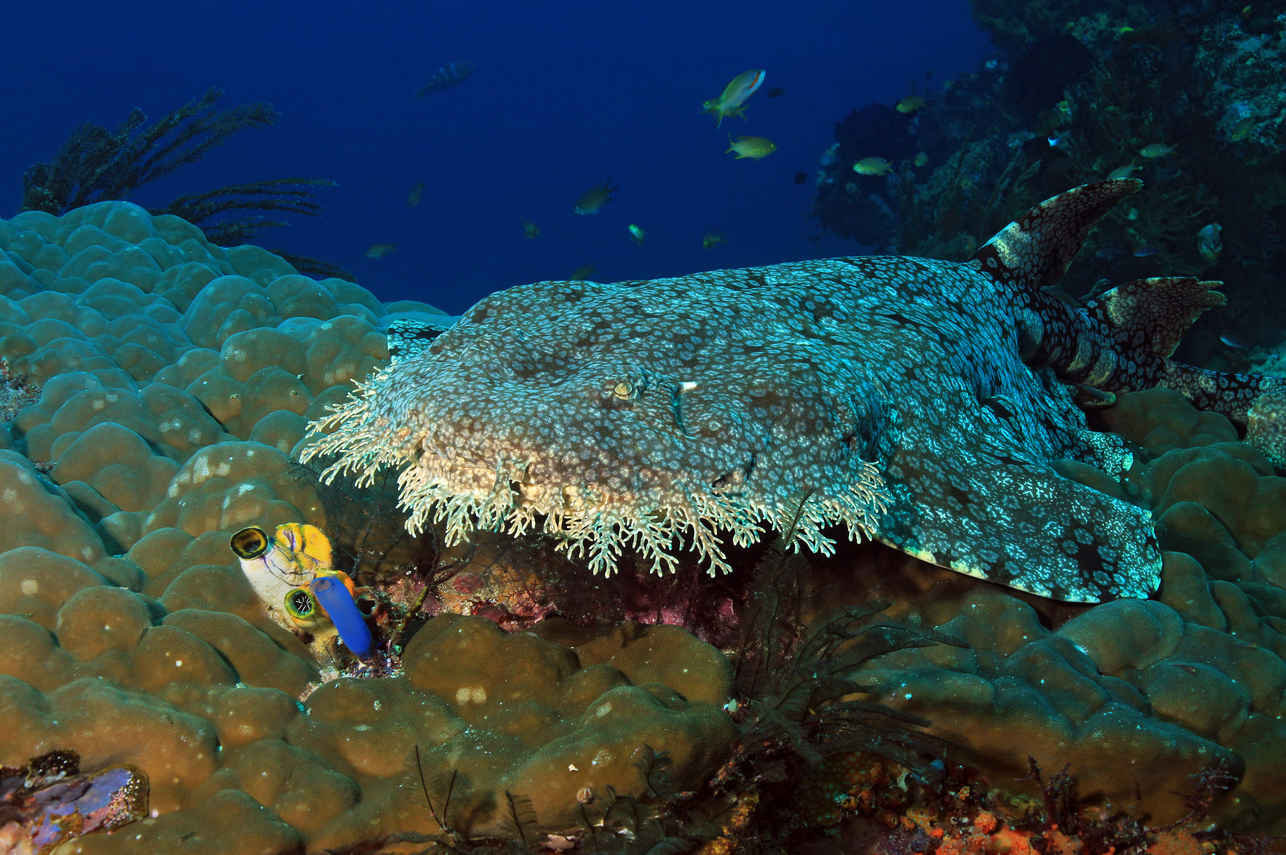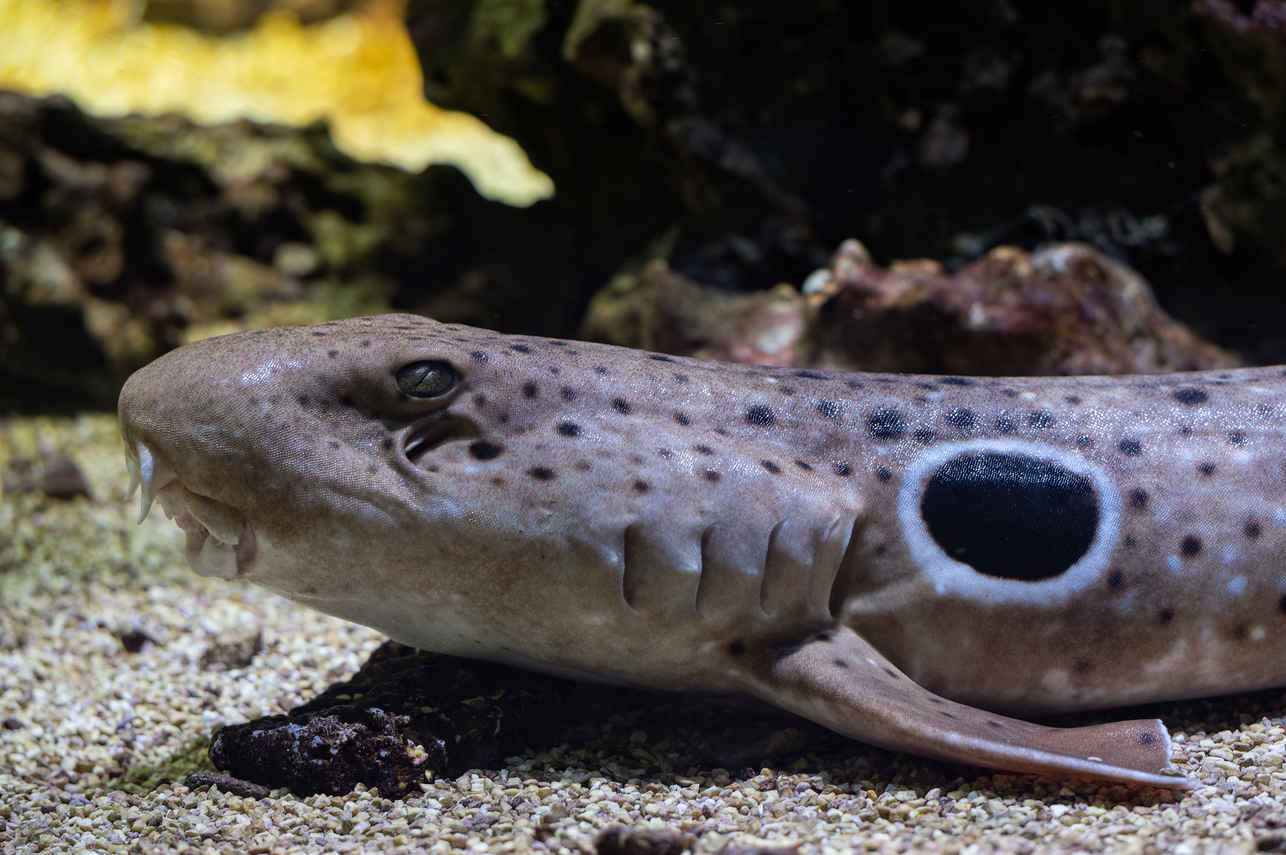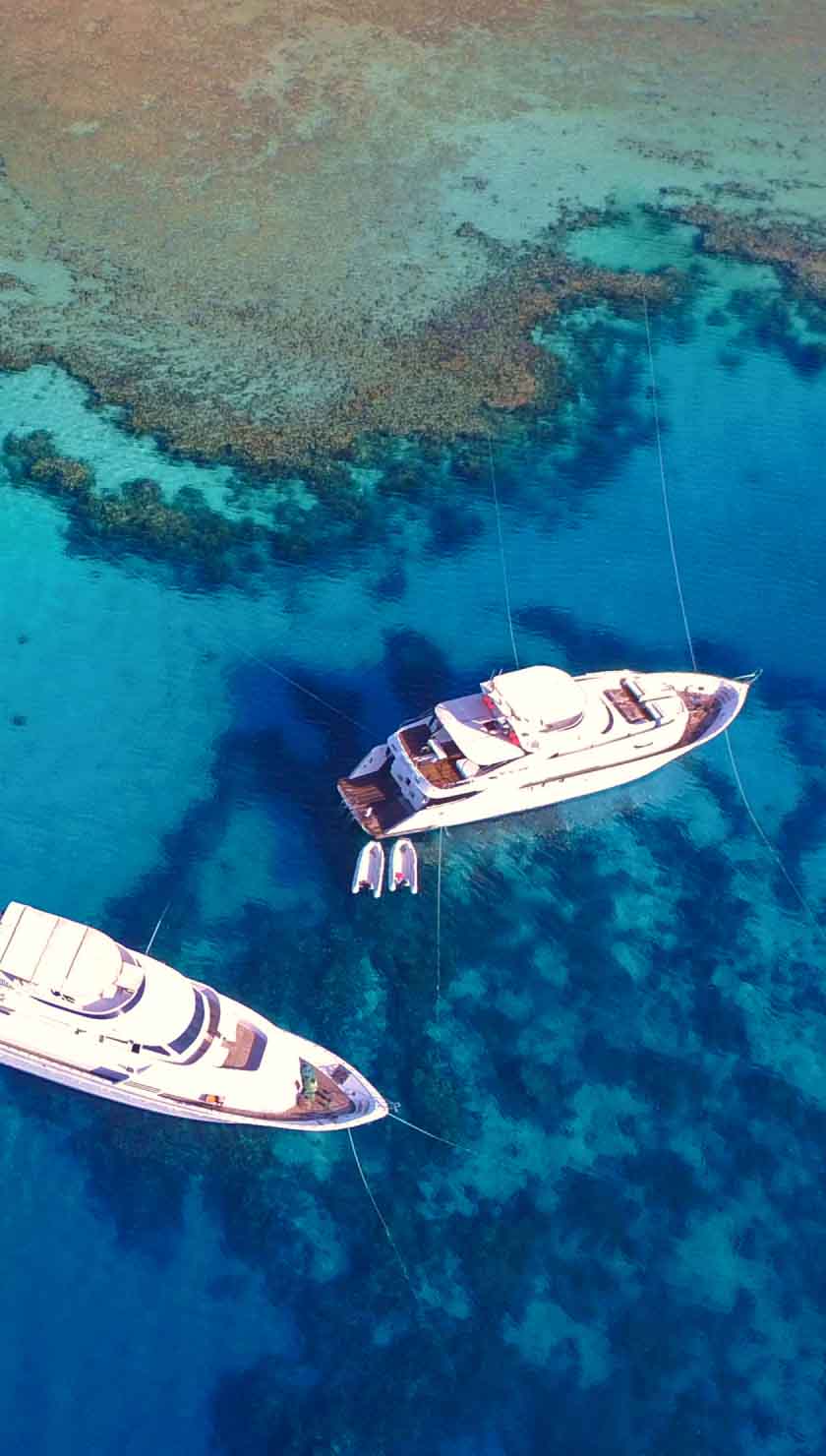The world's most peculiar sharks and where to dive with them
For the dedicated diver, the ocean holds a captivating collection of sharks that exist far beyond the popular narratives of apex predators. These are the enigmatic species, the masters of unique evolutionary niches, whose strange forms and secretive behaviors make them the ultimate prize for the patient observer. Encountering them requires a journey to the world's most pristine and remote marine environments. A liveaboard is your vessel for this quest, providing unparalleled access to the specific habitats and dive sites where these elusive sharks can be found. This guide serves as an atlas to these remarkable creatures, detailing what makes them special, the techniques for a successful encounter, and precisely where and when your liveaboard adventure can take you.
The Wobbegong Shark
The Wobbegong, or "carpet shark," is a marvel of concealment. Its name, derived from an Australian Aboriginal language for "shaggy beard," perfectly captures the fringe of sensory dermal lobes framing its powerful jaw. These tassels serve a dual purpose: they break up the shark's outline, perfecting its camouflage, and act as sensory lures for the unsuspecting fish and crustaceans that form its diet. The Wobbegong’s hunting strategy is one of absolute stillness, waiting for prey to venture within range before erupting in a sudden, upward strike of incredible speed and power.

Diving with a Wobbegong requires a fundamental shift in a diver’s awareness—you must learn to look for the reef itself, not just what is on it. The best technique is to move slowly, scanning carefully under table corals, inside overhangs, and along the edges of coral bommies. Approach low and from the side, giving the shark ample space, as it can feel threatened if cornered and possesses a formidable defensive bite.
Where & When to Dive with Wobbegong Sharks
Indonesia: Raja Ampat
A liveaboard in Raja Ampat is the world's premier Wobbegong safari. The area is a hotspot for the Tasselled Wobbegong, which can be found expertly camouflaged on the region's incredibly vibrant reefs. Liveaboards here allow for multiple dives in the nutrient-rich Dampier Strait, where a trained guide can help you spot them. The peak season for diving in Raja Ampat, offering the calmest surface conditions, is from October to April.
Australia: The Great Barrier Reef & Coral Sea
Liveaboards departing from Cairns offer access to the remote outer reef systems and the pristine Coral Sea. These less-trafficked locations are ideal for finding various species, including the Ornate and Spotted Wobbegong. The isolation provided by a liveaboard trip means you are exploring healthier ecosystems where these resident predators can thrive. The primary diving season here is year-round, but the period from August to December often provides excellent visibility and calm seas.
The Zebra Shark
The Zebra Shark is a marvel of natural transformation. As a juvenile, it is stunningly adorned with the bold stripes that give it its name. As it matures, a remarkable metamorphosis occurs: the stripes dissolve and re-form into a pattern of dark spots on a pale background, leading to the common name "Leopard Shark" in many parts of the world. These sharks are primarily nocturnal, using their incredibly flexible bodies and long, whip-like tails to hunt for mollusks in tight reef crevices. During the day, they are often found resting peacefully on sandy bottoms, a serene and beautiful sight for divers.
When approaching a resting Zebra Shark, the key is a calm, non-threatening technique. Swim slowly and from the side, staying level with the shark rather than descending from above. Avoid sudden movements and direct your exhaled bubbles away from it. This calm approach will often allow you to observe the shark for an extended period without causing it to stir.
Where & When to Dive with Zebra Sharks
Thailand: The Andaman Sea
A liveaboard is the only way to properly explore the remote pinnacles of the Andaman Sea, such as Richelieu Rock, which are renowned for Zebra Shark sightings. Here, they are often found resting in the sand channels surrounding the main site. The liveaboard season in the Similan and Surin Islands runs from November to May.
Indonesia: Komodo & Raja Ampat
The world-famous liveaboard destinations of Komodo and Raja Ampat are both excellent for Zebra Shark encounters. They are regularly seen on sandy slopes and plateaus throughout these regions. The best time for a Komodo liveaboard is from April to November, while Raja Ampat’s peak season is October to April.
The Epaulette Shark
One of the most behaviorally unique sharks, the Epaulette is a "walking shark." It has adapted to the extreme environment of shallow reef flats by using its muscular pectoral and pelvic fins to literally walk across the substrate. This incredible ability allows it to navigate tide pools with very low oxygen levels, giving it access to a food source of crabs and worms that other predators cannot reach. It is a small, slender shark, typically nocturnal, making it a prized find for observant divers.

A night dive is essential for witnessing the Epaulette Shark’s unique locomotion, an activity that is a staple of most liveaboard itineraries. The best technique is to move slowly across shallow reef flats, sweeping your dive light back and forth. A good guide is invaluable here. Once you spot one, keep your light beam steady and observe from a respectful distance to avoid altering its natural hunting behavior.
Where & When to Dive with Epaulette Sharks
Indonesia: Raja Ampat
The shallow, intricate reef systems explored on a Raja Ampat liveaboard are the perfect habitat for Epaulette Sharks. Night dives here offer a near-guaranteed chance to see them actively walking and hunting. The peak season runs from October to April.
Australia: The Great Barrier Reef
On liveaboards visiting the outer reefs, night dives often reveal Epaulette Sharks foraging on the reef flats. The calm, protected waters inside the main reef are an ideal environment for this species. The best period for a liveaboard trip is generally from August to December.
The Angel Shark
Often mistaken for a ray or a monkfish, the Angel Shark is a true shark with a highly flattened body and broad, wing-like pectoral fins. It is a master of ambush, using its mottled, sand-colored skin to bury itself in the sediment, lying in wait for fish to pass overhead. Its mouth can protrude at incredible speed to snatch its prey. Critically endangered in many parts of its range, any encounter with this unique shark is a rare privilege.
Finding an Angel Shark requires a keen eye and a focus on the sandy patches and transition zones adjacent to reefs. The diving technique is to swim slowly, hovering a few feet above the bottom while scanning for the shark’s distinctive outline under a fine layer of sand. Be very careful not to startle it, as a panicked flight response is its first line of defense.
Where & When to Dive with Angel Sharks
The Canary Islands, Spain
This is the world's most reliable destination for Angel Shark encounters. While not a conventional liveaboard hub, specialized multi-day trips exploring the waters around Tenerife, Lanzarote, and Fuerteventura exist. During the peak season from November to March, the sharks come into shallow bays to breed, making them more accessible to divers.
The Broadnose Sevengill Shark
Diving with a Broadnose Sevengill is like taking a trip back in time. This shark is a living fossil, immediately identifiable by its seven pairs of gill slits—a primitive trait from a bygone era, as most modern sharks have only five. With its single dorsal fin and a broad, rounded head, its appearance is distinctly prehistoric. They are known to be curious and social, often found gliding slowly and deliberately through the ethereal green light of temperate kelp forests.
The best technique for an encounter is often counterintuitive: be still. Find a suitable spot in a kelp forest clearing, remain calm, and let the shark's natural curiosity bring it to you. They often make several slow passes, offering excellent opportunities for observation and photography. Avoid sudden movements that could interrupt this serene experience.
Where & When to Dive with Sevengill Sharks
South Africa: The Western Cape
The kelp forests around Cape Town, particularly near Simon's Town, are the global hotspot for seeing Sevengills. While most operators run day boats, expedition-style liveaboards focusing on the unique temperate ecosystems of the Cape provide opportunities to dive with them during the peak season from May to August.
Australia: Tasmania
The cool, nutrient-rich waters of Tasmania provide a prime habitat for Sevengills. Liveaboards and dedicated operators exploring the island's remote coastline can offer encounters, particularly in areas with kelp forests and deep rocky reefs. The best time is during the Australian autumn and winter months.
The Galapagos Islands, Ecuador
This is an encounter for the fortunate few. While not a primary target, extremely rare sightings of Sevengill sharks do occur in the Galapagos. They are typically found in the colder, nutrient-rich waters from the Cromwell Current upwelling, primarily around the remote western islands of Isabela and Fernandina. A liveaboard trip focusing on this more challenging western itinerary during the cool season from June to November is the only conceivable way to have such a chance encounter.
The Sawshark
Easily confused with the sawfish (a type of ray), the Sawshark is a true shark, identifiable by the pair of long, sensitive barbels located halfway down its tooth-studded rostrum, or "saw." These barbels are used to detect invertebrates buried in the sand, which the shark then unearths and stuns with its saw. They are elusive, bottom-dwelling creatures and a rare and rewarding sight for any diver.
Finding a Sawshark requires a very observant eye and a focus on sandy or silty bottoms, often at the edge of reefs. Look for the saw and barbels protruding from the sediment. A slow, careful, and low-profile approach is critical, as these are shy animals that will quickly flee if they feel crowded or threatened.
Where & When to Dive with Sawsharks
Japan: The Izu Islands
For the truly adventurous diver, a liveaboard exploring the volcanic Izu Islands south of Tokyo offers a chance to find the endemic Japanese Sawshark. These trips focus on the unique marine life of Japan's cool, clear waters, and the season often peaks in the spring and autumn months.
South Africa: The Western Cape
Like the Sevengill, the Sixgill Sawshark inhabits the temperate waters of the Cape. While not a primary target, it is a potential bonus sighting for those on an expedition liveaboard during the winter months from May to August.
Australia: Southern Coasts
The temperate waters of Southern Australia, particularly around Victoria and Tasmania, are home to the Common and Southern Sawsharks. Dives in these cooler regions, whether from a land-based operator or a specialized expedition liveaboard, can yield sightings on sandy bottoms and near rocky reefs, especially during the Australian winter.
A Note on Deep-Water Sawsharks
It is a common question whether sawsharks can be seen in warmer climates. While locations like Indonesia and The Bahamas are home to their own unique, endemic sawshark species, it is important to note that these are true deep-sea dwellers. The Bahamas Sawshark and the Tropical Sawsharks of Indonesia live at depths of 1,000 to 3,000 feet (300 to 900 meters), far beyond the reach of recreational scuba diving. Therefore, they are not species that can be targeted on a dive trip.
The Megamouth Shark: The Rarest of Them All
The Megamouth shark is less of a dive target and more of a cryptozoological creature of the deep. Discovered only in 1976, it is one of the rarest fish in the world, with fewer than 300 confirmed sightings in all of history. It is the smallest of the three filter-feeding shark species, with a massive, soft head, rubbery lips, and a silvery-white upper jaw that is theorized to contain bioluminescent photophores to attract plankton in the dark. It is a vertical migrator, spending its days in the deep ocean and ascending to shallower—but still deep—depths at night to feed.
The Reality of an Encounter
It must be stated clearly: you cannot plan a dive to see a Megamouth shark. There are no reliable locations, seasons, or itineraries. Every single encounter with this animal by divers has been a matter of pure, unadulterated, one-in-a-billion luck. A handful of these encounters have been documented, including a famous incident off the coast of Komodo, Indonesia, where a liveaboard group had a chance encounter with one near the surface. The only "technique" for seeing one is to spend as much time as possible on the water in remote, deep-water adjacent, and highly biodiverse locations. A liveaboard in a place like Komodo, Indonesia, or the deep channels of the Philippines is the only conceivable platform from which such an impossible encounter could ever occur. It is the ocean's ultimate lottery ticket.










